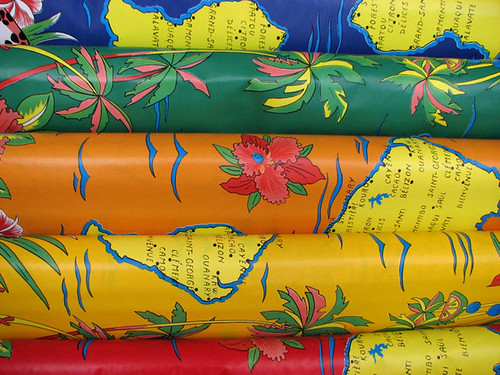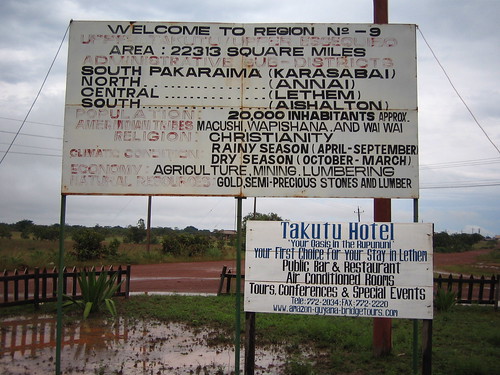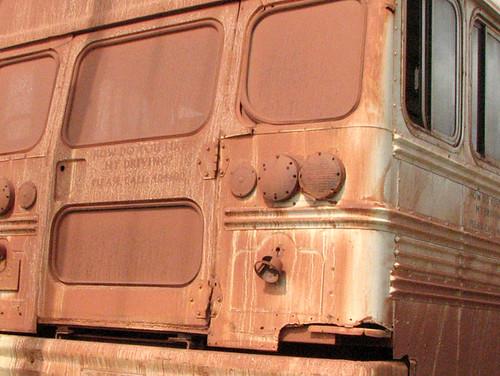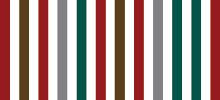
Ravi Rajcoomar's SPAN project proposal is an installation commenting on a painful social issue. He explains:
Suicide is a worldwide problem that seems to have no end. Some people take their own lives with hate, then you have terrorists who do it to kill others, and some do it to solve their problems. In recent years there have been many suicides and suicide attempts in Suriname — this is maybe one of the countries with the most suicides. It happens all over the country, but especially in Nickerie.
Everybody keeps talking about this. It got me thinking about what I could do as an artist to get people to reconsider their thoughts of suicide. My idea is to create an installation to encourage discussion.
It will be large box made out of triplex safety glass, with human silhouettes cut out, so you can easily walk through. More silhouetted figures will hang from the roof above. The interior walls will be covered with text, accompanied by a sound installation. The exterior will be bare white.
Concept: "suicide" installation, by Ravi Rajcoomar
Friday, January 29, 2010
Reading: on stereotypes, metaphors, and dreams
Wednesday, January 27, 2010
By Nicholas Laughlin
Sheets of linoleum printed with maps of French Guiana, on sale in Cayenne. Photo by Nicholas Laughlin; 8 April, 2009
[Excerpted and adapted from “Guiana Dreams”, an essay written for the Paramaribo SPAN catalogue. Read the full version here.]
Every place on earth is haunted by stereotypes. But some are more haunted than others, and some places are more tenaciously bound by the metaphors and fictions spun around them.
For the better part of five centuries, the region of South America that we call the Guianas has been tethered in the imagination of the West as a geography to be explored and exploited, endured and adventured in, but not as a place to truly make a home. The Dutch and the English built plantations and ports in their Guiana colonies. The French built prisons. Desired raw materials were shipped out, and undesirable men shipped in. That societies evolved here — hybrid communities where cultural elements from four continents collide and collude — was an accident of history.
Now we find ourselves in what we like to call a postcolonial age, having exchanged flags in a series of midnight ceremonies over the past forty years. But capital-I Independence has not made us less reliant on global economies, whether of finance, trade, or ideas. We depend as much as ever on foreign dollars and attention. And the world’s regard still filters through a persistent swaddle of stories we did not tell, images we did not make.
The predicament might be summarised in a question quoted by the literary scholar Mary Louise Pratt, in Imperial Eyes, her study of the ways travel literature has portrayed Latin America and Africa for European readers. How does “a destination for others” — a place that has been described and depicted mostly by others from elsewhere, with their own missions and prejudices — a place like Suriname, like the Caribbean — become “a home for the self”, for the real women and men who are born here, raise families, and work to achieve safe and comfortable lives? This big question touches on matters of political self-determination, cultural self-assertion, personal self-comprehension, and is specially urgent for those — our artists, our writers — whose labour it is to imagine new stories to replace the old ones that have trapped us.
Sign welcoming visitors to Lethem, Guyana, on the border with Brazil. Photo by Nicholas Laughlin; 7 August, 2005
Artists everywhere grapple with doubts about relevance and audience and income. But in Suriname, in the Caribbean, the smallness of our societies intensifies the struggle. The artist’s options can appear vexing. Fall back on local social networks offering patronage and flattery? Adopt the vocabulary and gestures currently fashionable in foreign academies, and try to catch the eye of a visiting curator? Resort to approved motifs of ancestral heritage and play the role of the “intuitive” or “primitive”, hoping to be recognised as authentically exotic?
Initiatives like ArtRoPa, arranging working exchanges between artists in Suriname and the Netherlands — or like the Wakaman Project, instigating creative partnerships between Surinamese artists at home and abroad — or like Paramaribo SPAN, building a platform to share the work of artists in Suriname with audiences elsewhere — seem to offer the possibility of stepping past the limits of a small place, the chance to infiltrate the wider world with our own metaphors and hopes. But, inevitably, old fictions intervene, and artists often find themselves and their audiences snarled in preconceptions of what Surinamese (or Caribbean) art should look like, what its acceptable subjects might be, how it should “read”, what it could mean.
An artist’s job is to create something meaningful — an object, an experience, a sensation — in the space where personal vision and ambition meet opportunity and social circumstance. The dimensions of that space are constantly shifting, and one way to define an artist’s success is by the range of the creative territory he or she is able to inhabit. For artists from parts of the world that have long been “destinations for others”, the space of potential action, and the ways their work can be received and understood, are bounded by the old imaginary geography. Before we can cross that boundary — or shift it, or erase it — we must both see it and recognise it for what it is: a confining fantasy of the exotic with a long history and a heady allure.
Metaphors have alarming longevity. The New World, five centuries later, is still “new”. To kill a story requires a more powerful story, a more resonant fiction. And re-charting the domain of our hopes and fears — our creative space, our “home for the self” — whether we give that home the name of a nation or a region, Suriname, Guiana, the Caribbean — demands immense and sustained feats of imagination. It demands that we invent new images and new languages to describe and debate our own real world, its scope and its span. It demands powerful and resonant new dreams.
Patriotic footwear, Paramaribo. Photo by Nicholas Laughlin; 29 June, 2009
Notes: on Art of Survival
Monday, January 25, 2010

Image courtesy the Tropenmuseum
The exhibition Art of Survival: Maroon Culture from Suriname opened at the Tropenmuseum (Tropical Museum) in Amsterdam on 6 November, 2009, and runs until 9 May, 2010. Patricia Kaersenhout, an artist with Surinamese roots, based in Amsterdam, made the following notes after visiting the exhibition.
7 January, 2010
I do not have a love-hate relationship with the Tropenmuseum. On the contrary, I like spending hours there. Most of the time, the exhibitions are clear and the materials of high quality, sometimes shown with latest interactive stuff. Maybe I like it because it brings back a memory of the unknown.
In a way it reminds me of the covered tropical beach in Japan, complete with sunset, salt water, waves, sand, palm trees, and a horizon — but covered with a glass roof. An artificial world.
The Tropenmuseum represents an artificial tropical world which, to me — a child of immigrants from Suriname, but raised in a Western European climate — gives a bit of a sense of belonging. I only go there during the winter, when temperatures are low, skies are grey, and streets are wet.
The first thing I noticed entering Art of Survival was the overload of information. I immediately got discouraged, and had to supress the feeling to walk to the bookshop, buy the catalogue, walk to the restaurant, buy a coffee and sandwich, and start reading. I controlled myself, because I had a mission.
When there’s so much information, what sticks in your mind? Where to start? At the beginning, one might say — but it was not so clear where that was. Maybe it was of no importance. I just started somewhere. A touchscreen with a lot of videos and old photographs. The design of the video programme was very good. The explanation clear. It was easy to skip from one film to another. So as a viewer you’re not forced to see the whole film through. One could interrupt the film and go back and repeat an interesting scene.
After scrolling through some films, my eyes got captured by Obu/Wosu: A Life in French Guiana, by Felix de Rooy. The story tells about a Maroon sculptor, Kenneth Soleg Charvein, who lost most of his family at the tragedy of Moiwana. He talks about traditions in his work which he learned from his father. He prefers to work in a group of sculptors, because the world is bigger than we can imagine. “What you didn’t think of yourself will be created by the other.” Very impressive, because it’s in flat contradiction to the individualistic art tradition in which I was educated.
De Jongste Loot is a 1989 documentary by Frank Zichem. It tells the story of a soldier from the national army, Wigo Benton, who is captured by Ronnie Brunswijk. He is an eyewitness to some horrific events, and decides after he’s liberated to go to Holland. It turns out that he doesn’t exist there, because he doesn’t have official documents. One of the things he does to survive is listen to the birds and check if the soil of his little garden is fertile, so he can grow flowers and vegetables. Zooming in on his personal story penetrates the traumatic things that happened during that time in the interior of Suriname, deep in the consciousness of the viewer.
Next to many films and audio presentations, there were beautiful carved wood chairs and combs, woven cloths, and more objects which I won’t try to describe, because there were so many, and I have an ambivalent feeling about exhibiting utilitarian objects, even if they are from another culture. Even though they are well made, it seems rather odd to place them in a museum, looking at them with the serious eye of an interested visitor. Every culture has its right to privacy. I don’t like to peek into someone’s kitchen knowing that the other will never get a chance to see mine.
Among those objects which were supposed to give us an insight into daily life among the Maroons were two very strong artworks by Marcel Pinas. Here the exhibition shows its weakest point. Hanging contemporary art between arts and crafts just doesn’t work. I really like arts and crafts and I really like contemporary art. I just don’t want them to be shown together in such a way that they don’t uplift each other, but take each other down. Efforts to bring those two together often don’t do either of them any good. They are two disciplines which stand on their own. They can influence or inspire each other, but their approach in expression and ideas remains different.
Walking out of the museum, I was confronted by the exhibition poster on a billboard: an image of a black guy photographed half-faced. He’s wearing mirrored sunglasses. They reflect an image of trees and a river. I guess it’s in the interior of Suriname. To me it reflects a longing to be there. To flee from the hell of the European climate into a warm tropical paradise. A longing which Europeans have had since the fifteenth century. The paradox is that the Maroons have to “survive” in what we still see as paradise. But as soon as one has to survive instead of living one’s life, paradise is lost.
Video tour of Art of Survival, courtesy the Tropenmuseum
Labels: de rooy, kaersenhout, maroon, notes, pinas, tropenmuseum, zichem
Diary: a visit to Moengo
Monday, January 18, 2010

Outside the Masanga Restaurant in Moengo, where the Paramaribo SPAN artists met over lunch; photo by Christopher Cozier.
On Tuesday 15 December, 2009, members of the Paramaribo SPAN team — curator Christopher Cozier, writers Chandra van Binnendijk and Marieke Visser, and coordinator Ann Hermelijn — accompanied by a group of Paramaribo-based artists, made a day-trip to the town of Moengo and the nearby village of Moiwana, a couple hours’ drive east of the capital. Moengo is the site of a cultural centre which artist Marcel Pinas is working to establish — long-term plans include a residency programme for visiting artists to work with members of the community. Moengo will also be a satellite site for the Paramaribo SPAN exhibition, opening in February 2010.
A group of artists walking through Moengo; photo by Hedwig de la Fuente
Ellen Ligteringen was one of the artists on the trip. A few days later, she wrote the following note:
“The trip to Moengo and especially the meeting and interacting was really cool (Chris’s word). Listening and responding in a very open way, just the artists’ projects. The meeting felt fertile, like the soil of Suriname. Moengo was a perfect location for this meeting, created by Marcel. We became a part of his project.
“Even on the drive back in the bus we did not stop discussing the projects; we shaped them further, their content and their appearance. Ken Doorson’s project, looking at the red-light area in Paramaribo, was discussed very widely from the men’s point of view, with a lot of jokes. The jokes are a common way to discuss issues, like satire on television in other parts of the world. I’ve never experienced such laughing from the heart in any art programme.”
Bicycle at the side of the road, Moengo; photo by Christopher Cozier
Group shot of the Paramaribo SPAN team and artists; photo by Hedwig de la Fuente
Marcel Pinas at the Moiwana Monument, which he designed to commemorate members of the community killed in the 1986 Moiwana Massacre; photo by Christopher Cozier
Labels: diary, doorson, ligteringen, moengo, pinas
Topography: on the outskirts of Paramaribo
Friday, January 15, 2010

The start, middle, or end of a long journey? Bus covered with dust from the red earth roads of the interior of Suriname. Photo by Nicholas Laughlin; 27 June, 2009
Labels: topography





